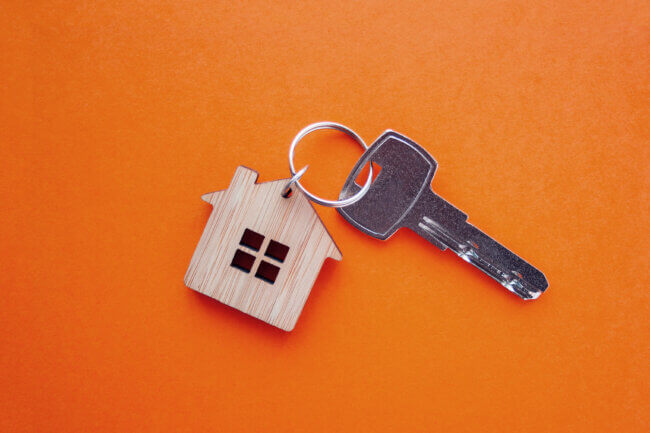The Burrow

The ‘Great Australian Dream’ of buying and owning your own home is seemingly becoming out-of-reach for many amid a difficult economic climate. However, renting for life isn’t as much of a taboo overseas with the support of public policy.1
As experts in helping Australians compare home loans, we wanted to uncover some of the countries where home ownership is cheaper than renting (or not).
To do this, we indexed the latest-available 2022 average house-to-rent price ratio, average wage, and unemployment rates across Organization for Economic Cooperation and Development (OECD) countries.
Here are our findings.
We’ve ranked the best countries for financial liveability – based on the buying-renting price ratio and economic factors, including the average wage and unemployment rate, which contribute to the ‘affordability’ of renting or buying a home.
These are the key takeaways:
| Rank | Country | Buy vs Rent Price Difference | Average Annual Wage (USD) | Unemployment Rate | Overall Index Score |
| 1 | Korea | +10.8% | $48,922 | 2.88% | 7.97 |
| 2 | Norway | +25.1% | $53,756 | 3.23% | 7.59 |
| 3 | Switzerland | +25.6% | $72,993 | 4.30% | 7.22 |
| 4 | Belgium | +18.8% | $64,848 | 5.58% | 7.13 |
| 4 | Poland | +16.1% | $36,897 | 2.89% | 7.13 |
| 5 | Denmark | +25.2% | $64,127 | 4.48% | 7.04 |
| 6 | United States | +38.4% | $77,463 | 3.65% | 6.95 |
| 7 | Japan | +25.7% | $41,509 | 2.60% | 6.58 |
| 8 | United Kingdom | +29.1% | $53,985 | 3.73% | 6.48 |
| 9 | Australia | +37.7% | $59,408 | 3.70% | 6.39 |
| 9 | Germany | +47.7% | $58,940 | 3.07% | 6.39 |
| 10 | Slovenia | +21.8% | $47,204 | 4.03% | 6.30 |
| 10 | Ireland | +24.4% | $52,243 | 4.50% | 6.30 |
| 11 | Iceland | +59.5% | $79,473 | 3.85% | 6.12 |
| 12 | Finland | -0.2% | $51,836 | 6.77% | 6.11 |
| 13 | Netherlands | +61.1% | $63,225 | 3.54% | 5.93 |
| 14 | Austria | +39.2% | $63,802 | 4.76% | 5.56 |
| 15 | New Zealand | +49.2% | $50,722 | 3.28% | 5.46 |
| 16 | Estonia | +17.9% | $34,705 | 5.58% | 5.18 |
| 17 | Italy | +4.2% | $44,893 | 8.08% | 5.10 |
| 17 | Luxembourg | +72.8% | $78,310 | 4.60% | 5.10 |
| 18 | Canada | +54.1% | $59,050 | 5.30% | 4.72 |
| 18 | France | +29.1% | $52,764 | 7.32% | 4.72 |
| 19 | Lithuania | +27.1% | $43,875 | 5.93% | 4.54 |
| 20 | Sweden | +27.9% | $50,407 | 7.48% | 4.35 |
| 21 | Czechia | +76.1% | $33,476 | 2.40% | 4.17 |
| 22 | Mexico | +43.0% | $16,685 | 3.27% | 3.89 |
| 23 | Hungary | +73.9% | $28,475 | 3.62% | 3.06 |
| 24 | Colombia | +23.9% | $22,248 | 11.22% | 2.96 |
| 24 | Spain | +33.5% | $42,859 | 12.93% | 2.96 |
| 25 | Chile | +34.5% | $33,042 | 7.88% | 2.69 |
| 26 | Latvia | +68.0% | $34,136 | 6.85% | 1.95 |
| 27 | Portugal | +64.2% | $31,922 | 6.16% | 1.94 |
| 28 | Slovak Republic | +62.2% | $26,263 | 6.15% | 1.85 |
| 29 | Greece | +42.0% | $25,979 | 12.46% | 1.48 |
| 30 | Türkiye | +167.8% | $31,761 | 10.48% | 0.74 |
Australia ranks ninth in the index for financial liveability – tied with Germany.
While it is 37.7% more expensive to buy than rent a home, it is above average for annual wages at US$59,408 and features a low 3.7% unemployment rate according to the OECD data (2022 average).
However, according to CoreLogic Australia, home values increased by 8.1% on average in 2023, and the median home value is $759,437 nationally as at January 2024.2 Meanwhile, rents increased by 8.3% in 2023 with the median rental costing $601 per week as at December 2023.3
Both were attributed to a surge in interstate and international migration in Australia post pandemic restrictions, resulting in high demand on limited property supply.

A lower percentage ratio means the price difference between renting and buying is smaller, with a negative figure indicating that it is cheaper to buy than rent and a positive figure indicating it is pricier to buy than rent.

Finland is the only economically developed country studied where it is marginally cheaper to buy than rent a home with a difference of just -0.2%.
Contributing to its ranking is above-average annual wage at USD$51,836 and a low 6.77% unemployment rate relative to other OECD countries.

In Italy, it is slightly more expensive to buy than rent a home with a price premium of 4.2% for property ownership.
The Mediterranean republic has sub-par yearly wages at US$44,893 and a relatively high 8.08% unemployment rate, which both contributed to its mediocre overall score.

In Korea, it’s about one-tenth pricier to buy than rent a property.
The country sits in the middle for average annual wages at US$48,922, yet has a low 2.88% unemployment rate.

Türkiye is one of the most expensive countries to buy a home – costing more than 2.5 times than renting.
Türkiye has a disproportionately low average annual wage at US$31,761 and a high 10.48% unemployment rate compared to other OECD countries.

In Czechia, it costs 76.1% more to buy than rent a home.
While the European Republic has a below-average typical wage at US$33,476 per year, its unemployment rate is the best out of other economically developed nations at only 2.40%.

In Hungary, the price to buy is almost three-quarters more expensive than renting a home.
It has a relatively low average annual wage at US$28,475, but its 3.62% unemployment rate is above par.
Our study has demonstrated that buying a home is still more expensive than renting in most countries.
Compare the Market Australia’s General Manager of Money Stephen Zeller said comparing home loan providers is key to potentially saving money for prospective property buyers.
“Different lenders may offer different rates, so it pays to compare the options in the market to find one that suits your circumstances,” Mr Zeller said.
“By comparing, you have a better chance of finding a loan that can maximise your budget, with competitive interest and comparison rates, and features that you may need.
“Home loan tools can also make the home buying and refinancing search easier with Compare the Market Australia offering a borrowing power calculator, free credit score and report, and free property profile reports.”
Data is accurate as at 31 January 2024 using the latest-available OECD statistics – which represent the average in 2022.
We studied and indexed OECD countries to determine the most financially liveable nations globally.
The index score was determined by three different factors, which were indexed with a score between 0 and 10 (the latter representing the best score):
All three data points were averaged to form an equally weighted overall index score out of 10 (rounded by two decimal points) in order to rank each country and form the financial liveability list.
Additional sources:
Note: The OECD has not defined whether Korea applies to South Korea or North Korea.